Alton Coleman (November 6, 1955 – April 26, 2002) was an African-American spree killer. The U.S. Bureau of Justice Statistics defines a spree killing as "killings at two or more locations with almost no time break between murders." He was executed by the state of Ohio for the murder of 44-year-old Marlene Walters of Norwood, Ohio during a six-state killing spree in 1984.
Contents[hide]
1 Overview
2 Background of Coleman and Brown
3 Details of the murders
3.1 May 1984
3.2 June 1984
3.3 July 1984
4 Capture and trial
5 Appeals and execution
6 References
6.1 Court Decisions
6.2 Media Articles
7 External links
//
[edit] Overview
Coleman received four death sentences from three Midwest states: Illinois, Ohio (twice) and Indiana. At the time of his execution he was the only condemned person in the country to have death sentences in three states. His partner in crime, Debra Denise Brown, was originally slated to be executed in Ohio, but in 1991 her death sentence was commuted to life in prison by Governor Richard Celeste. She still has a death sentence for the murder the duo committed in Indiana. However, Brown is serving her sentence, without possibility of parole, in the Ohio Reformatory for Women in Marysville.
During the summer of 1984, 28-year-old Coleman and Brown, who was 21, embarked upon a killing spree through several Midwestern states. By the time the couple were caught, Coleman was charged or wanted for questioning in assaults on at least 20 people in 13 separate attacks, including seven murders. Almost all of the victims were African-American like Coleman and Brown. Some authorities have said that was simply because the duo knew they would blend better in the black community, that there was no racial motive in the murders, but there is some disagreement. John Douglas, a retired FBI profiler, argues convincingly that there was at least some racial motivation in the attacks. On page 184 in The Anatomy of Motive, he cites evidence that Coleman, in the middle of a vicious assault, "went into a practically incoherent tirade about how blacks were forcing him to murder other blacks."[1]
[edit] Background of Coleman and Brown
Coleman was a middle-school dropout who lived with his 73-year-old grandmother in Waukegan, Illinois, and who was well-known to the Illinois law enforcement community. The son of a prostitute who often had sex with customers in his presence, he was charged with sex crimes six times between 1973 and 1983. Two of the cases were dismissed; Coleman pled guilty to lesser charges in two and was twice acquitted. Coleman was scheduled to go on trial in Illinois on charges stemming from the rape of a 14-year-old girl when he fled and began his indiscriminate killing.
One of 11 children, Brown was borderline mentally retarded, suffered head trauma as a child, and was described as a "dependent personality." She was engaged to another man when she met Coleman in 1983, but left her family and moved in with him shortly afterward. Although a willing participant in the assaults and murders, Brown was never violent or in trouble with the law until she met up with Coleman.
In commuting Brown's sentence, Governor Celeste cited her low IQ scores, ranging from 59 to 74, and her "master-slave" relationship with Coleman. Brown was one of eight Ohio death row inmates to have her sentence commuted by Celeste - a staunch opponent of capital punishment - a week before he left office. Four of those whose sentences were commuted were the state's only female death row inmates.
Despite her nonviolent history before the spree, Brown remains unrepentant for her acts. During the sentencing phase of her first Ohio trial, Brown sent a note to the judge which read in part: "I killed the bitch and I don't give a damn. I had fun out of it."
[edit] Details of the murders
[edit] May 1984
Their crimes began in May 1984 when Coleman befriended Juanita Wheat, who lived in Kenosha, Wisconsin, and was the mother of nine-year-old Vernita. On May 29, 1984, Coleman abducted Vernita to Waukegan. Her body was discovered on June 19, 1984 in an abandoned building, four blocks from Coleman's grandmother's apartment. The body was badly decomposed and the cause of death was ligature strangulation.
On May 31, 1984, Coleman befriended Robert Carpenter in Waukegan, and spent the night at his home. The next day he borrowed Carpenter's car to go to the store and never returned.
[edit] June 1984
In June 1984, Coleman and Brown appeared in Gary, Indiana, where they encountered two young girls, 9-year-old Annie and her niece, 7-year-old Tamika Turks. Tamika's partially decomposed body was discovered on June 19. The cause of death was ligature strangulation. Annie survived, even though she was sexually assaulted by both Coleman and Brown.
The day Tamika's body was found, Coleman befriended Donna Williams, 25, of Gary. On July 11, Williams's badly decomposed body was discovered in Detroit, about a half-mile from where her car was found. The cause of death was again ligature strangulation.
On June 28, Coleman and Brown entered the home of Mr. and Mrs. Palmer Jones of Dearborn Heights, Michigan. Palmer was handcuffed by Coleman and then badly beaten. Mrs. Jones was also attacked. Coleman ripped the Joneses' phone from the wall and stole their money and car.
[edit] July 1984
On July 5, Coleman and Brown came to Toledo, Ohio, where Coleman befriended Virginia Temple, the mother of several children. Her eldest child was Rachelle, age nine. When Virginia dropped out of communication with relatives, they became concerned about the children and, entering the home, found the young children alone and frightened. Virginia's and Rachelle's bodies were discovered in a crawl space. A bracelet was missing from the home and later was found in Cincinnati under the body of Tonnie Storey. The cause of death of both Virginia and Rachelle was strangulation.
The same morning as the murders of Virginia and Rachelle, Coleman and Brown entered the home of Frank and Dorothy Duvendack of Toledo, where Coleman proceeded to bind the couple with appliance and phone cords which had been cut. Coleman and Brown took money and the Duvendacks' car. One of Mrs. Duvendack's watches was stolen and found later under another victim.
Later that same day, Coleman and Brown appeared at the home of Reverend and Mrs. Millard Gay of Dayton. They stayed with them and then accompanied them to a religious service in Lockwood on July 9. The next day the Gays dropped off Coleman and Brown in downtown Cincinnati.
By this time, Coleman had come to the attention of the FBI, which on July 12 added him to its Ten Most Wanted List as a "special addition". Coleman was just the 10th person since the initiation of the list in 1950 to merit inclusion in such a manner.
Coleman and Brown bicycled into Norwood on July 13 at about 9:30 a.m. Less than three hours later they drove away in Harry Walters' car, leaving Harry Walters unconscious and his wife, Marlene, dead.
Harry Walters survived, and later testified that Coleman and Brown inquired about a camper he had put up for sale. Walters sat on the couch as he and Coleman discussed the trailer title. Coleman picked up a wooden candlestick and, after admiring it, hit Harry Walters on the back of the head. The force of the blow broke the candlestick and drove a chunk of bone against Mr. Walters' brain. From that point on, Mr. Walters remembered little else.
Sheri Walters, Harry and Marlene's daughter, came home from work at about 3:45 p.m. At the bottom of the basement steps, she found her her mother dead and her father barely alive. Both had ligatures around their throats and electrical cords tied around their bare feet. Her mother's hands were bound behind her back and her father's hands were handcuffed behind his back. Her mother's head was covered with a bloody sheet.
The coroner indicated Marlene Walters had been struck on the head approximately 20 to 25 times. Twelve lacerations, some of which were made with a pair of Vise-Grips, covered her face and scalp. The back of her skull was smashed to pieces. Parts of her skull and brain were missing.
The living room hallway and basement were splattered with blood. Fragments of a broken soda bottle, bearing Coleman's fingerprints, were found in the living room. Strands of Marlene Walters's hair were found on a bloodstained magazine rack located in the living room. Bloody footprints, made by two different kinds of shoes, were found in the basement.
The family car, a red Plymouth Reliant, was gone. Money, jewelry and shoes had been stolen. Left behind were two bicycles, clothes and shoes.
Two days later, the Reliant turned up abandoned in Kentucky. The couple kidnapped Oline Carmical Jr., a Williamsburg college professor, and drove back to Dayton with their victim locked in the trunk of the car. They abandoned this stolen vehicle in Dayton on July 17, and Carmical was rescued by authorities.
Coleman and Brown reappeared at the home of Millard and Kathryn Gay. Reverend Gay recognized Coleman, who was by this time the subject of a huge nationwide manhunt, and he and his wife were accosted with guns. Reverend Gay asked Coleman, "Why you want to do us like that, like this?" According to Gay, Coleman responded: "I'm not going to kill you, but we generally kills them where we go." Coleman and Brown took their car and headed back toward Evanston, Illinois. Along the way they took time to steal another car in Indianapolis, killing its owner, 77-year-old Eugene Scott.[2].
[edit] Capture and trial
On July 17, 1984, Alton Coleman became the 388th fugitive listed by the FBI on its Ten Most Wanted list.[3] On July 20, in Evanston, someone from Coleman’s old neighborhood pulled up to a red light. While he waited for the light to change, Coleman and Brown crossed the street in front of his car. He knew Coleman only casually but did recognize him. As Coleman and Brown continued walking west, the witness drove north to a gas station where the police were notified.
The information was dispatched and a description of the two was broadcast. As officers pulled into the area a detective saw Coleman and Brown sitting on portable bleachers in empty Mason Park, but noted they were wearing different T-shirts. The detective informed the other units just as two sergeants were driving by the park. As they heard the broadcast they turned and saw the two. As Coleman was approached, the officers observed Brown walking away from Coleman toward the rear of the park.
The detective joined the two sergeants and Coleman was approached for questioning. While Coleman was being interviewed, two other officers stopped Brown as she tried to exit the park. She was searched and a gun was found in her purse. Coleman had no identification and denied he was Alton Coleman. The pair were taken into custody without incident and transported to the Evanston Police Department, where both were identified by fingerprints.
In the police station Coleman was strip-searched and a steak knife was found between two pair of sweat socks he was wearing. When taken into custody they had a shopping bag full of different T-shirts and caps. It was learned as the two walked they would stop every three to four blocks to change shirts and caps.[4]
A week after they were arrested, more than 50 law enforcement officials from Illinois, Wisconsin, Michigan, Indiana, Kentucky and Ohio met to plan their strategy for prosecuting Coleman and Brown. Michigan, which does not have the death penalty, was quickly ruled out as the place to begin and eventually Ohio was given the first shot at the alleged spree killers.
"We are convinced that prosecution (in Ohio) can most quickly and most likely result in the swiftest imposition of the death penalty against Alton Coleman and Debra Brown", U.S. Attorney Dan K. Webb said.
[edit] Appeals and execution
Ohio was successful in convicting Coleman and Brown on a pair of aggravated murder charges - in May 1985 for the murder of Tonnie Storey, and in June 1985 for the murder of Marlene Walters - as well as a plethora of other violent crimes. They were both sentenced to be executed, and the lengthy appeals process began. Coleman's case went to the U.S. Supreme Court several times between 1985 and 2002, but his numerous arguments that his conviction and death sentence were unconstitutional failed to sway the justices.
By April 2002, time had run out for Coleman. His last-ditch effort to avoid lethal injection was unsuccessful when, on April 25, the Ohio Supreme Court rejected a claim by Coleman's attorneys that the state's plan to accommodate the large number of victims and survivors who wanted to view the execution would turn it into a "spectator sport". There were so many victims and survivors who were allowed to witness the execution that prison officials had to set up a closed-circuit viewing outside the death house.
For his final meal, Coleman ordered a well-done filet mignon smothered with onions, fried chicken breasts, a salad with French dressing, sweet potato pie topped with whipped cream, French fries, collard greens, onion rings, cornbread, broccoli with melted cheese and biscuits and gravy. He washed it all down with a Cherry Coke.[5]
On April 26, 2002, reciting Psalm 23, Alton Coleman was executed by lethal injection in the death chamber at the state prison in Lucasville. Reginald Wilkinson, director of the Ohio Department of Rehabilitation and Correction, said Coleman did not convey remorse for the killings.[citation needed]
[edit] References
^ http://www.johndouglasmindhunter.com/research/synopsis_anatomy.php
^ http://www.clarkprosecutor.org/html/death/US/coleman771.htm
^ Federal Bureau of Investigation (2000). FBI’s Ten Most Wanted Fugitives Program: 50th Anniversary 1950-2000. K&D Limited, Inc..
^ Arresting officers, Scharm, Trigoura, Hynds, Walker, Grinnel
^ "Last Meals on Death Row (2002)". Dead Man Eating. http://www.deadmaneating.com/dme2002.html. Retrieved 2007-11-02.
[edit] Court Decisions
Coleman v. Mitchell, United States Court of Appeals for the Sixth Circuit, 268 F.3d 417; 2001 U.S. App. LEXIS 21639; 2001 FED App. 0367P (6th Cir.), October 10, 2001
In re Coleman, Supreme Court of Ohio, 95 Ohio St. 3d 284; 2002 Ohio 1804; 767 N.E.2d 677; 2002 Ohio LEXIS 916, April 19, 2002
State v. Brown, Supreme Court of Ohio, 38 Ohio St. 3d 305; 528 N.E.2d 523; 1988 Ohio LEXIS 289, August 31, 1988
State v. Coleman, Supreme Court of Ohio, 37 Ohio St. 3d 286; 525 N.E.2d 792; 1988 Ohio LEXIS 212, July 6, 1988
State v. Coleman, Court of Appeals of Ohio, First Appellate District, Hamilton County, 1987 Ohio App. LEXIS 9048, October 7, 1987
[edit] Media Articles
"Midwest Fugitive Caught in Illinois", The New York Times, July 21, 1984
"FBI Adds to '10 Most Wanted' List", The Washington Post, July 12, 1984
"Coleman's Execution Dulls Pain Only A Little", Columbus Dispatch (Ohio), April 27, 2002
[edit] External links
Clark Prosecutor
Debra Brown
Debra Brown, Indiana Death Row
Alton Coleman and Debra Brown from The Crime Library
Picture of Alton Coleman from the Ohio Department of Rehabilitation and Correction
Persondata
Name
Coleman, Alton
Alternative names
Short description
Date of birth
November 6, 1955
Place of birth
Waukegan, Illinois, United States
Date of death
April 26, 2002
Place of death
Retrieved from "http://en.wikipedia.org/wiki/Alton_Coleman"

UN UOMO GIACE TRAFITTO DA UN RAGGIO DI SOLE, ED E’ SUBITO SERA
Non nobis Domine, non nobis, sed Nomini Tuo da gloriam

VIAGGIA CON RYANAIR
JE ME SOUVIENS

VILLA BERTI VIA BEL POGGIO N. 13 IMOLA http://www.villaberti.it/
Condizioni per l'utilizzo degli articoli pubblicati su questo blog
I contenuti degli articoli pubblicati in questo blog potranno essere utilizzati esclusivamente citando la fonte e il suo autore. In difetto, si contravverrà alle leggi sul diritto morale d’autore.
Si precisa che la citazione dovrà recare la dicitura "Pietro Berti, [titolo post] in http://pietrobertiimola.blogspot.com/"
E' poi richiesto - in ipotesi di utilizzo e/o citazione di tutto o parte del contenuto di uno e/o più post di questo blog - di voler comunicare all'autore Pietro Berti anche tramite e-mail o commento sul blog stesso l'utilizzo fatto del proprio articolo al fine di eventualmente impedirne l'utilizzo per l' ipotesi in cui l'autore non condividesse (e/o desiderasse impedire) l'uso fattone.
Auguro a voi tutti un buon viaggio nel mio blog.
Si precisa che la citazione dovrà recare la dicitura "Pietro Berti, [titolo post] in http://pietrobertiimola.blogspot.com/"
E' poi richiesto - in ipotesi di utilizzo e/o citazione di tutto o parte del contenuto di uno e/o più post di questo blog - di voler comunicare all'autore Pietro Berti anche tramite e-mail o commento sul blog stesso l'utilizzo fatto del proprio articolo al fine di eventualmente impedirne l'utilizzo per l' ipotesi in cui l'autore non condividesse (e/o desiderasse impedire) l'uso fattone.
Auguro a voi tutti un buon viaggio nel mio blog.
Anchorage

lunedì 10 gennaio 2011
Alton Coleman : the spree killer
Iscriviti a:
Commenti sul post (Atom)
Presentazione candidature in quota UDC a Bologna - Lista Aldrovandi Sindaco
PLAYLIST MUSICALE 1^
Post più popolari
-
Further information: List of Louisiana Governors , Louisiana law , and Louisiana Constitution Louisiana State Capitol Louisiana Governor...
-
« Mi si accusa di tutte le morti violente nel mondo, mi meraviglio come non mi addossino anche le vittime della Grande Guerra [1] » Alphons...
-
Louis Vuitton ( Lavans-sur-Valouse , 4 agosto 1821 – 27 febbraio 1892 ) è stato un imprenditore francese , fondatore nel 1854 ...
-
Moto Guzzi (conosciuta anche solo come Guzzi) è una celebre azienda italiana di motociclette , fondata nel 1921 da Carlo Guzzi . Dal punto...
-
L'IMPERO DEI ROCKEFELLER La Standard Oil fu a lungo l'impresa petrolifera più potente al mondo. Il suo fondatore John D. Rockefell...
-
Con il termine origàmi si intende l'arte di piegare la carta (折り紙, termine derivato dal giapponese , ori piegare e kami carta) e, sostan...
Elementi condivisi di PIETRO
Rachel

FORZA JUVE! E BASTA. FORZA DRUGHI!

GALWAY - IRLANDA

PUNTA ARENAS

VULCANO OSORNO

Fairbanks

Nicole Kidman - Birth , io sono Sean

DESERTO DI ATACAMA

Moorgh Lake Ramsey, Isle of Man

Port Soderick

TRAMONTO SU GERUSALEMME

Masada, l'inespugnabile

KATYN

I GUERRIERI DELLA NOTTE
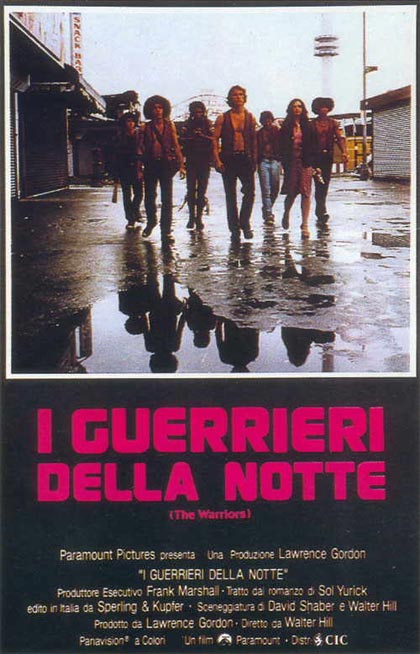
L'assassinio di Jesse James per mano del codardo Robert Ford

THE WOLFMAN
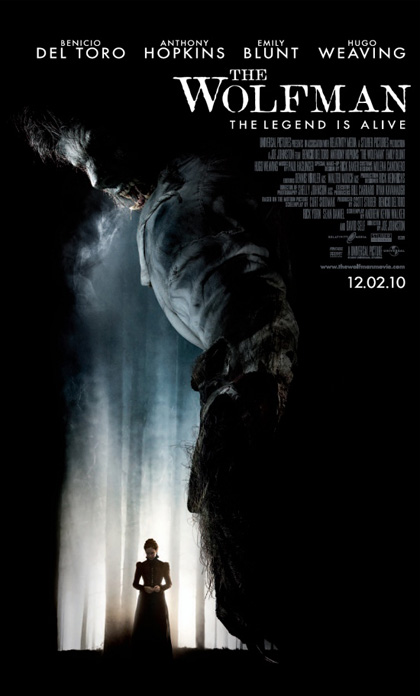
Sistema Solare

TOMBSTONE

coco

PLAYLIST MUSICALE I^
Rebecca Hall

















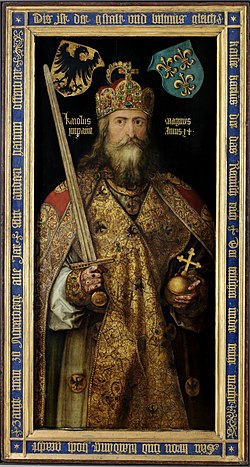






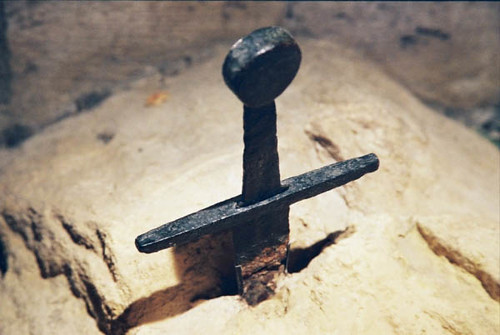







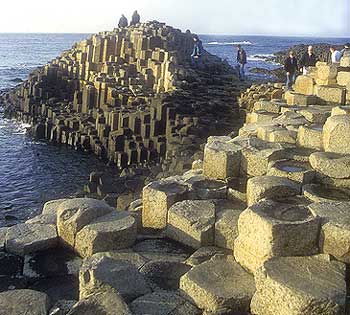







































Nessun commento:
Posta un commento